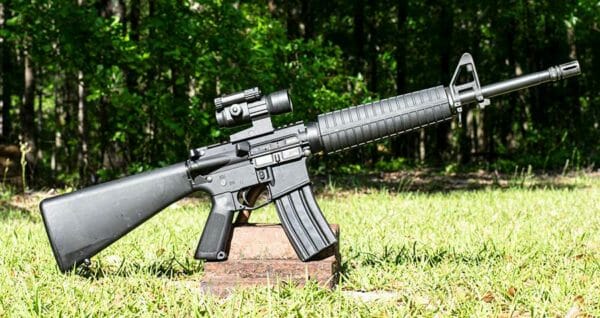
In part one, we discussed the basic safe handling of firearms (and by extension our AR-15). If you are a brand new gun owner, do not skip part one! Go back and read it.
Now, for the rest of you, we’re going to continue where we left off. Keep in mind, that the following items are somewhat specific to the AR-15, but much of the information (especially on sights) is universally applicable.
Live Inventory Price Checker
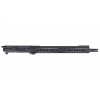
|
Angstadt Arms AR-15 5.56 Complete Upper Assembly - 16" | Rainier Arms | $ 404.00 |
|
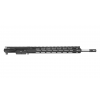
|
Bravo Company MFG (BCM) MK2 AR-15 5.56 NATO Complete Upper Receiver Group - 18" | Rainier Arms | $ 855.99 |
|

|
Ar-15 M4-76 Complete Upper Receiver Assembly - Ar-15 M4-76 Upper Receiver 5.56 16'''' M-Lok Black | Brownells.com | $ 588.42 |
|

|
Ar-15 Sage Dynamics Upper Receiver Assembly 5.56 - Sage Dynamics 5.56x45 Complete Upper 12.5'''' Bbl M76 Rail | Brownells.com | $ 1101.99 |
|
Get Some Sights
If you purchased a basic AR-15 from somewhere like Palmetto State Armory or Aero Precision, odds are it’s missing one or both iron sights. This isn’t just a cost-cutting measure, it’s because shooters tend to have very specific tastes and preferences when it comes to AR-15 sights. The problem is that it’s impossible to precisely aim a firearm without any sights installed. So while your brand new PSA gun can load and fire ammo just fine, placing those rounds where you want is a different story. When it comes to aiming your firearm, you have three basic options.
- Magnified Optics: Magnified optics are among the easiest to use for medium and long-range shooting. They use a series of lenses to magnify what a shooter is looking at. Etched into the glass is a reticle or aiming crosshair. On all modern magnified optics, they are adjustable for windage and elevation. Meaning, users can change where the scope is pointed to align with where the gun is shooting. I would not recommend these for new shooters, because while they are easy to use, they don’t teach good fundamentals, and if a shooter intends to use their rifle for home defense, it can be difficult to correctly use inside the confines of a home. Prices range from $150 to $2,000 and up.
- Reflex Sights / Red Dots: Reflex sights were designed for one thing: speed. They are the fastest aiming device around. Available in a number of configurations, sizes, and colors (both the reticle and body) on a basic level these optic work by projecting an illuminated, “dot” on a piece of glass only visible to the shooter. They are considered parallax free, meaning if the shooter can see the dot, the sight is aligned properly. For home defense, reflex sights are king. Simply aim the dot at your target, and if need be, pull the trigger to send rounds to the dot’s projection. While these aren’t the best sights to teach new shooters fundamentals like sight picture and breathing control, they are very fast and very versatile. So if you’re in need of a home defense weapon ASAP, and your gun lacks sights of any sort, pick up a reflex sight or red dot. Expect to spend a minimum of $90 for an entry-level reflex sight, with higher-end military-grade options hovering around $500.
- Iron Sights: Despite their name, iron sights are built from polymer, steel, or aluminum. These are the most durable sights available, and in many ways, the most rudimentary. Unlike magnified optics or reflex sights, iron sights require training to use properly. Most are fully adjustable for windage and elevation, and they range in price from $50 to $200. These are my personal choice for new shooters looking to become proficient shooters, but they’re also the most difficult to use.
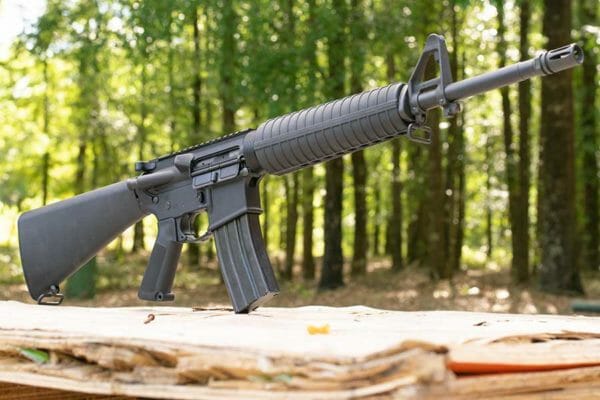
In terms of installing these sights on your gun, all of them use what is known as a Picatinny Rail interface or mount. Some of them will feature a quick detach mount, while other will simply use a hex screw. But all of them will include detailed instructions for installation. It’s all very basic easy stuff, but if you’re concerned that you’re not installing them correctly, look at the manual or search for more information online.
After you have your choice of sight installed, be sure to zero it. Explaining the finer details of which are somewhat time-consuming, and while the process is straightforward, it can be a little complex. Luckily for you, we have an excellent article that gives step-by-step directions on how to do so.
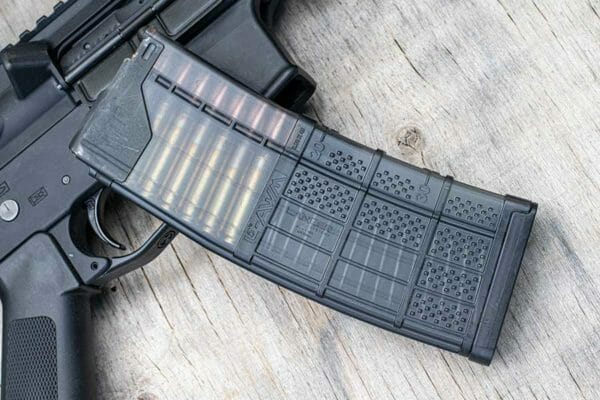
Three High-Quality Magazines
Ammunition magazines were designed to be disposable to a soldier in the field. As civilian gun-owners, we like to reuse our mags. With most gun designs, magazines are somewhat expensive, and if you’re lucky, the factory ones are the best available. With the AR-15, there are dozens of manufacturers and hundreds of options. But that brings up another issue – how does a brand new shooter separate the gold from the garbage?
In my experience, here are some basic guidelines to determine if a product is worthwhile or not. One easy way to tell if a product is high quality enough is if it’s in use by special forces and/or competitors. Notice I said, special forces, not the military. The military doesn’t buy the best products available, they buy the most affordable ones that meet their minimum requirements. For the M16/M4 and AR-15 this means aluminum 30-round magazines.
These work well, but there are better options available on the market for similar, or lower prices. My personal recommendations are Magpul PMAGS and Lancer L5 AWM magazines. I recommend Magpul because there are ubiquitous, lightweight, and function great in any STANAG-compatible firearm. Basically, if the gun says it uses AR-15 magazines, it will almost certainly run on PMAGS. But what about Lancer mags?
For me, I hate compromise. I want exactly what I want, and I don’t want to have to give up anything to get it. While this is rarely possible in life, it is certainly the case with Lancer’s Advanced Warfighter Magazines or AWMs. These magazines combine the lightweight construction and corrosion resistance of polymer, with the added strength and longevity of steel. They do this by incorporating a steel collar into a high-impact polymer body. The only downside of them is cost. They’re a little pricier than PMAGS.
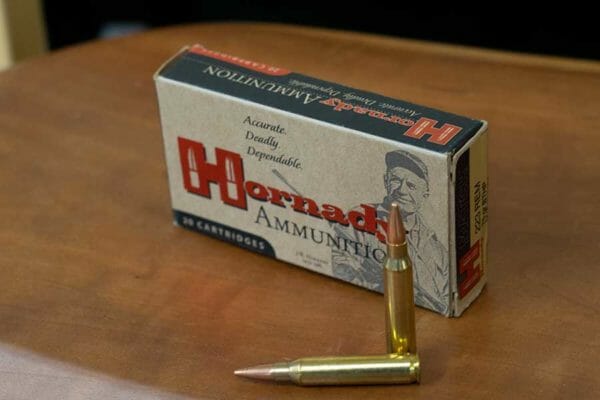
180 Rounds of Quality Ammunition
Why 180? Because the combined capacity of your three magazines is 90 rounds, and shooters should be able to fill these mags up for a range trip without depleting their supply. Ideally, you should have half a case of ammo to make sure you can practice at the range a few times, and still have enough ammo to use the gun for home defense. (In a perfect world I’d have 10,000 rounds loaded into magazines so I could head to the range at a moment’s notice, and never worry about having to load magazines. Sadly, I’m not a millionaire, and my wife would kill me if I made that dream a reality.)
Ammunition is expensive, and doubly so if you purchase the high-quality stuff. But don’t give in to temptation, and buy the cheapest crap you can find. The difference in cost between steel-cased and brass-cased ammunition is worth it for the sake of increased reliability and more consistent performance. Yes, many guns run fine with steel ammo, but some still don’t. To make sure anyone reading this doesn’t end up having to clear a malfunction at a time when they really need their gun, I’m going to stick to the recommendation of brass-cased, quality ammo. If you’re not in the know, some very reputable brands are Winchester Ammunition, Federal Performance Ammunition, Black Hills Ammunition, and my favorite, Hornady.
Whichever round you choose, be sure to buy the same loading for all your rounds to make sure that your rifle will shoot consistently. Especially if you’ve zeroed it for a certain loading, you’ll have the best results sticking to that specific cartridge.
The First Step Towards Independence
Congratulations, you’ve taken an incredible first step on your road to being what our forefathers thought of as a true American. By deciding to take your, and your family’s fate into your own hands, you’ve tasted one of the fundamental liberties our forefathers fought and died to ensure. Make no mistake, your rifle isn’t just for fun plinking at the range or defending your home from intruders. It’s a message to politicians, a warning to tyrants, and a promise to the core principals of this great nation. When a citizen decides to become a gun owner, they are letting the government know that while they expect the Government to assist them in times of turmoil, they will step up if the Government won’t. And that’s exactly the kind of individual liberty that makes this nation so great.
Jim is a freelance writer, editor, and videographer for dozens of publications who loves anything and everything guns. While partial to modern military firearms and their civilian counterparts, he holds a special place in his heart for the greatest battle implement ever devised and other WW2 rifles. When he’s not reviewing guns or shooting for fun and competition, Jim can be found hiking and hunting with his wife Kimberly, and their dog Peanut in the South Carolina low country.


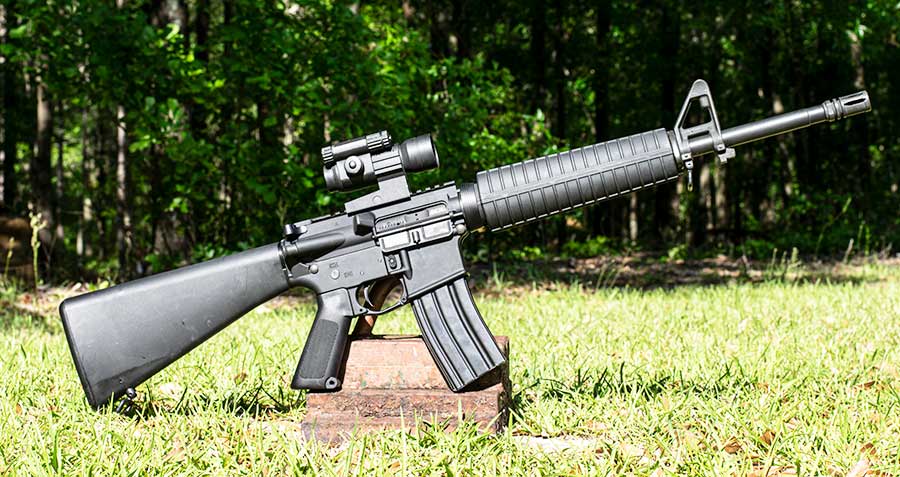
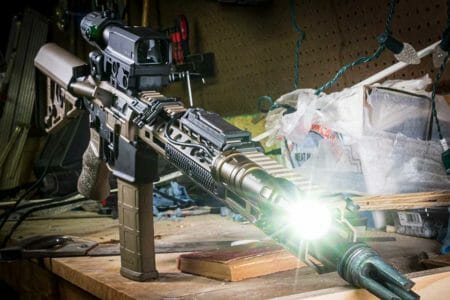
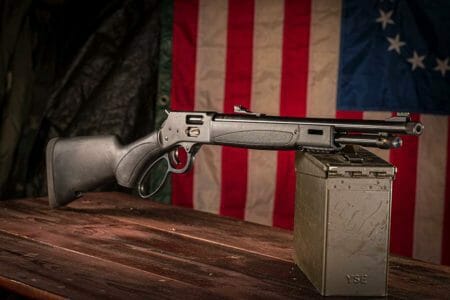
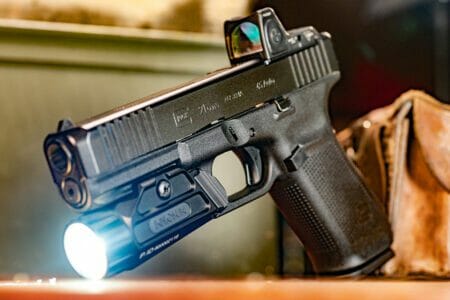
10,000 rounds?……that’s a good start.
Three mags? Seriously? Try thirty. The “three mags” are the worn out crappy ones you turn in to get them off your case if they institute a ban. Do have a few compliant ones for public consumption, the rest they don’t need to know about.
A little bird tells me that some people have stockpiles of standard-capacity mags for guns they don’t even own, just in case they get one after a ban, or for trading stock…
180 rounds of ammo…Not. Minimum 1000 rounds for each firearm, regardless of caliber. 3-5 thousand for each firearm you shoot the most and consider for either self protection or home protection. Ammo will become another target of Liberal/Progressive Anti 2A politicians. As well as their zealots and sycophants. As the Courts continue to follow the Bill of Rights. It must be understood the those who wish to Deny law abiding citizens their Constitutional Rights. Will continue to attempt to do so, regardless of the Courts. It is has and will continue to be a part of their strategy of playing… Read more »
“Basically, if the gun says it uses AR-15 magazines, it will almost certainly run on PMAGS”
Um, nope.
You might also have a look at Frontier ammo. They use Hornady bullets, come in a variety of weights and types. I’ve gotten very good results and the price is usually towards the lower end of the compromise between cost and perfection.
A freedom or right ignored is a freedom or right lost.